Grasscutters or cane rats are a popular choice for meat in many West African countries, and they are beginning to gain popularity in other parts of the world as well. Grasscutter farming is a very profitable enterprise, and it is not as difficult as you might think to get started.
In this blog post, we will discuss the basics of grasscutter farming, from choosing a site to setting up your pen to breeding and raising the animals. We will also offer some tips on how to sell your grasscutters for the best price.
What are Grasscutters?
Grasscutters (Thryonomys swinderianus), also called Cane Rats and Grass Cutter in English-speaking West African countries, Agouti in French-speaking West African countries and hedgehogs in Central Africa, are rodents that are widely found in wet or grasslands areas in Africa. Though these animals are widely hunted in Africa, they can be domesticated like other micro-livestock animals such as rabbits.
Some characteristics of grasscutters are:
- Grascutters are placid and relatively prolific animal
- They become sexually active and mature at 5-6 months. At this age, they can reproduce and give birth to as high as 12 young.
- They can be easily reared or managed, and this made their domestication an alternative to poaching them in the wild.
- They can grow rapidly in intensive conditions
- The meat of grasscutters is very rich in protein and economically valuable.
How to Breed or Raise Grasscutters
The best way to breed grasscutters is by raising them under an intensive system, i.e. keeping them in cages or pens inside a very safe shed. It is very important to choose a very good location as this is highly critical for successful grasscutter rearing.
Other conditions that must be met for a successful grasscutter rearing include:
- The area or location should be easily accessible and free from flood.
- It must be well ventilated and secured.
- There must be constant availability of forage and clean water.
- The number of grasscutters kept and the objectives of production determine the size of the building or pen. However, the standard is that a family of grasscutters, comprising one adult male and four females should be provided a space of 1.6 to 2 m2.
Also Read: 6 Reasons Why You Should Raise Grasscutters or Cane Rats
Housing in Grasscutter Farming
There are various materials used in constructing the rearing shed of grasscutters, Breezeblocks, bricks, straws and bamboo that can be used for this purpose. It is always advised to use local materials to reduce construction costs.
It is mandatory that the building have adequate light and ventilation. The long sides of the pen must be low-walled (1.5 meters high) and the upper half can be covered with a chicken net. Corrugated iron or other waterproof materials can be used for roofing the rearing shed.
How to build a grasscutter house, pen or cage
Rearing Pen
Grasscutters are commonly kept and raised inside rearing pens. It is the production objectives that determine the number of pens to construct. One breeding female per pen is recommended and the floor space per adult grasscutter is 0.2 m2.
A grasscutter pen setup could be:
- A pen for adults
- A pen for mating
- A pen for giving birth and feeding the young
- A pen for fattening young grasscutters
The pen’s construction materials determine the layout of the pens. Brick pens are fixed and unmovable while metal pens are movable.
Using wood, bamboo or straw to construct pens for grasscutters is not recommended because the grasscutters can eat them. Rearing pens can be opened or closed, and when constructing, it is important to have passages to move around between rearing pens.

There are two types of pens for grasscutters. They are Open Pens and Close Pens.
Open Pens
These are enclosures that are not covered at the top and they have a surface area of 3 m2 and a height of 1.5 meters. The pens have openings in the side that facilitate access for the farmer to move in and out of the pens.
Close Pens
These are enclosures that are covered at the top with some appropriate roofing material. These pens may be partitioned into compartments. The surface area could be between 2-3 m2 and a height of 0.8 meter.
If two compartments are created, they should have the same surface area. They should also be separated by partitions and have a 15 cm opening for free movement of grasscutters to and fro the compartments.
Various materials can be used to make the covering and the floor of the building should be even and smooth, while the floor of the pens can be plastered.
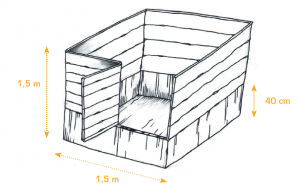
Feeding and Drinking Troughs for Grasscutters
These can be constructed with clay or cement but should be heavy enough for the grasscutters. This is to prevent the animals from knocking the troughs over. The farmer can personally construct the troughs by molding them out of wood or metal. One trough should be for three grasscutters.
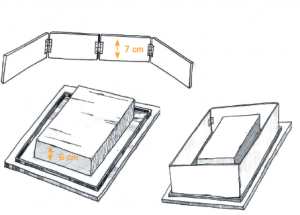
Squeeze Cage
A squeeze cage is used for easy handling of grass cutters. It should have dimensions that are the same as the animal to be handled. A squeeze page can be made by building a rectangular cage with fine-meshed screening. When constructing this cage, the average weight of the animals and variety should be considered. It shouldn’t be built in a way that the animals can turn or move about inside the cage.
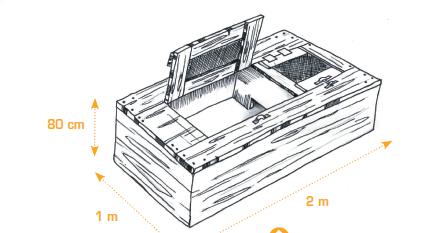
Also Read: Pictures of Locally-Made Grasscutter Cages
Reproduction in Grasscutters
Some basic facts about grasscutters with regards to reproduction are as follows:
- Sexual maturity: Male grasscutters mature in 8 months or 32 weeks and they have a minimum body weight of 2.5kg while the female grasscutters mature in 6.5 months or 26 weeks having a minimum body weight of 1.8 kg.
- Sex ratio: 1 male can service 4 to 10 females.
- Ovulation: Just like female rabbits (does), female cane-rats start ovulating on sighting a male
- Gestation period: 152 days
- Numbers of litters per year: 2 litters
- Number of young per litter: 3-11 young
- Suckling period: 40 days before weaning
Selection for Breeding
In grasscutter production, random selection should be avoided. You should procure the best animals from the nearest breeding center or another grasscutter breeder. Additionally, when making your selection, it should be based on body weight.
All the females within a family should be having almost the same body weight and the male grasscutter should be 0.5-1 kg heavier than the females. Don’t buy or breed closely related mating pairs; that is, a male is closely related to the females.
Mating in Grasscutters
A male grasscutter is capable of mating with many females grasscutters in a single period. The male should be placed in the mating pen and the female grasscutter is moved from her own pen to the male’s pen. Leave both in the pen for 24 hours.
Note: Don’t move the male to the female pen because it may result in to fight and mating may not occur. Also, avoid mating a male that is lighter than the female in weight.
There are two mating options in grasscutter farming:
- Permanent mating: Here, the male and female grasscutters are allowed to mate together in the same pen but the young are moved to another pen after they have been weaned.
- Temporary mating: Here, the female is placed together with the male until she is pregnant and she is moved to another pen.
Both permanent and temporary matings have their advantages and disadvantages.
Advantages of permanent mating
- Increased breeding cycle
Disadvantages of permanent mating
- Difficult to identify the mother of each offspring
- Less control over reproduction
- Risk of cannibalism
- Risk of exhausting reproductive females
- Under-exploitation of the male
Advantages of temporary mating
- Clear identification of mother and offspring
- Excellent management of the breeding process
- Reduced risk of adult male killing the offspring
Disadvantages of temporary mating
- Increased investment (several pens needed)
- Need for larger space to house females
- Reduced number of litters per female and per year
Gestation
The gestation period for grasscutters or cane rats is 152 days. After your male and female grasscutters must have mated with each other, it is necessary to check if the female is pregnant.
Pregnancy Test
4-8 weeks after mating, carefully insert a cotton bud into the genital of the female. If it changes color to red, then that grasscutter is pregnant. If there is no discoloration, then the female is not pregnant.
Birth
Newborn grasscutters resemble adult ones. Within a few hours, they can move around. After the female has delivered, she must be provided with enough feed and water for adequate milk production.
Weaning Grasscutters
You should wean your newborn grasscutters 40 days after they are born. This is necessary because any extension will make the mother grow weak due to prolonged breastfeeding. When weaning, separate the males from the females. You can identify a male grasscutter by distancing the genitals and anus, which are twice as large as those in young females.
The feeds or foods that are given to grasscutters should meet all their daily nutritional requirements. Since the grasscutters would be in captivity, their diet should consist of majorly green forage, but fresh or dried food could also be provided. They can also be given concentrates rich in energy, proteins and minerals.
Feeds and Feeding in Grasscutter Farming
Grasscutters need a balanced diet daily. The green mistake some grasscutter farmers make is giving their animals only green forage. That is one of the reasons for the slow growth and low milk production in nursing female grasscutters.
On the other hand, if they are not fed with green forage such as grasses or legumes, they would suffer digestive problems. A balanced diet would produce an average weight of 3.5 kg and 2.8 kg in male and female cane rats respectively.
Some of the forage and concentrates that grasscutters could be fed with as presented below:
- Edible grasses and legumes (click here to see the list of grasses and legumes)
- Agricultural by-products such as garden wastes, leftover vegetables, ripe or unripe fruits, coconut, leaves, pawpaw and bamboo shoots.
- By-products from agricultural processing like Brewers dried grain (BDG), corn bran, wheat bran and groundnut cake (GNC).
- Tubers and roots: Yam, yam peels, cassava, cassava peelings, potato, potato peels, cocoyam and cocoyam peels.
- Cereals grain such as rice, millet, sorghum and corn.
- Shells like egg shells, oyster shells or bone meal.
Grasscutters should be provided with food always. Also, the grasscutters should be fed with fodder 2 hours before feeding them concentrate in the morning and evening. It is also very important to provide water always to the animals. Hence, grassy fodder needs to be dried in the sun for 1-2 days before feeding to animals.
Concentrate could be combined with fodder. The concentrate can be made from just one ingredient or several ingredients. It is advisable to alternate the concentrate if a single ingredient concentrate is used. If the concentrate is a mix of more than one ingredient, then it could be given to the grasscutters continuously.
Importance of Conserving and Storing feeds
Conservation of feeds and stocking the feed barn is another aspect of grasscutter farming that should be considered. The fodder for the animals should be air-dried or sun-dried and kept in a dry place. Planting and cultivating fodder could be done to have sufficient fodder in the period of scarcity.
Concentrates should be stored in a dry place and avoid storing them for long. This is because concentrate feeds are very sensitive to changes in humidity, temperature and oxidation. It could also be attacked by insects, rodents, mites, bacteria, fungi or mold.
Check: Feed Formula for Preparing Grasscutter Concentrate Feed
Health Management in Grasscutter Farming
Health management is very important in all aspects of livestock farming. As a grasscutter or cane rat farmer, the health of your big rats should be very important to you because if they come down with diseases, you would be spending additional money to combat those diseases. Of course, your cost of production is increasing. To protect your grasscutters from diseases, the following measures should be done:
- Inspect grasscutters daily in order to detect any sick animals early.
- Giving your animals the appropriate feed and taking basic hygiene measures help in reducing potential losses to diseases.
- Avoid rough handling of your animals and unnecessary noise
- Regularly disinfect the pens, sheds, cages, environment and materials. Wash the feeding and drinking troughs twice a week.
- Quarantine new grasscutters for 2 weeks before joining them with the main stock.
- Keep feed away from rodents by making the feed store rodent-proof.
- Give minerals and vitamin supplements bi-weekly. You can also give sweetened lemon juice which has been recognized as an immune system strengthener. To make this juice, get 400 ml of pure lemon juice and add 55 cubes of sugar and mix with 20 liters of water.
How to Identify a Sick Grasscutter
To know if a grasscutter is sick, there are some observable signs you will see. These include:
- Loss of appetite
- Dull-looking or matted fur
- Social withdrawal or isolation from others
- Inability to escape capture
- Liquid or soft faeces
- Paralysis
- Coughing
- Inflammation of certain parts of the body
- Abnormally long incisors
See below for some problems and possible solutions
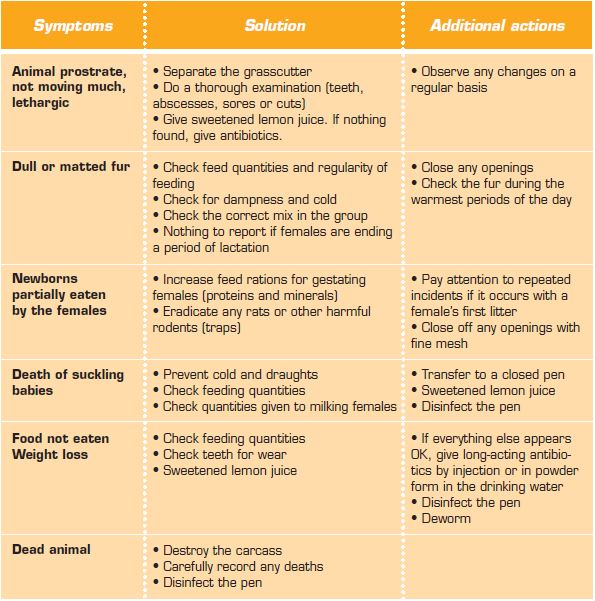
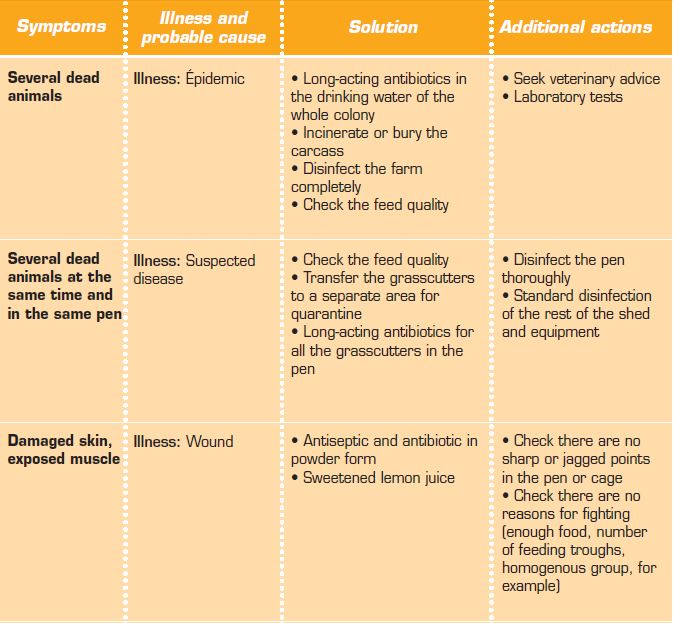
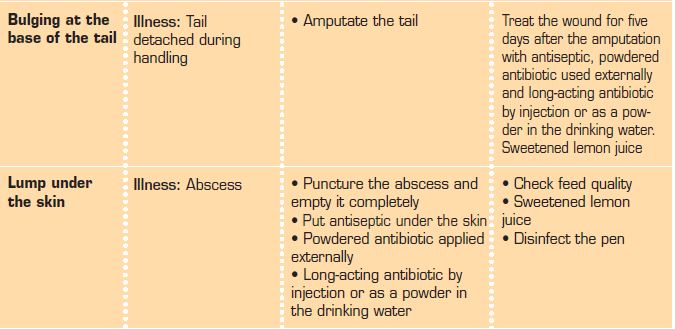
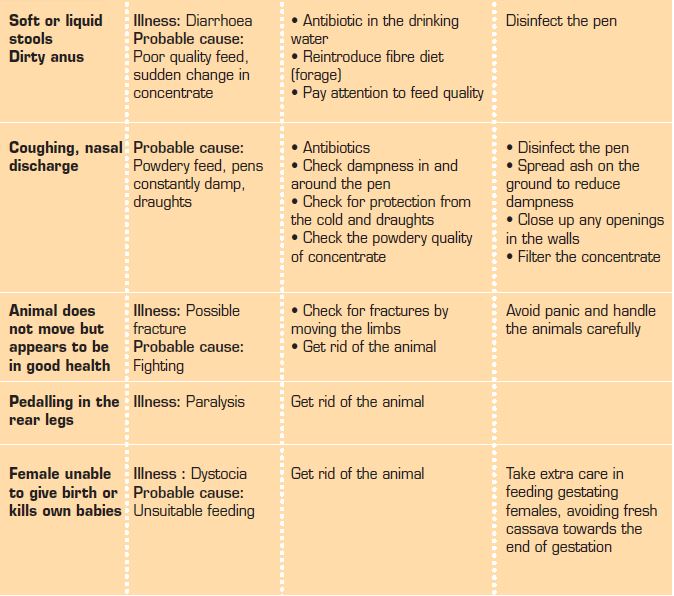
Free Grasscutter EBook [PDF]
If you have read the guide above and you need detailed information about starting grasscutter farming or how to raise grasscutters or cane rats, download the eBook below. You will really find it helpful.
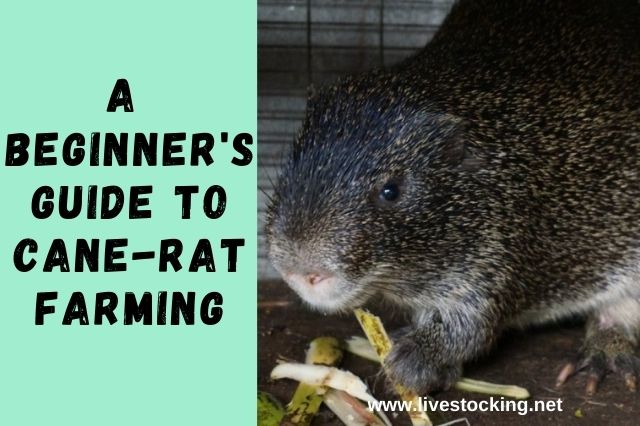
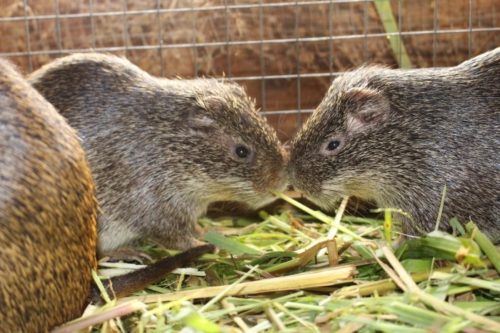
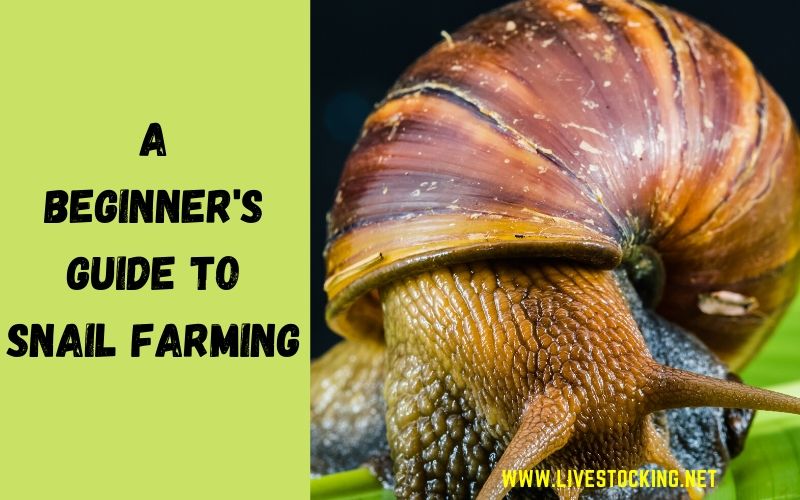
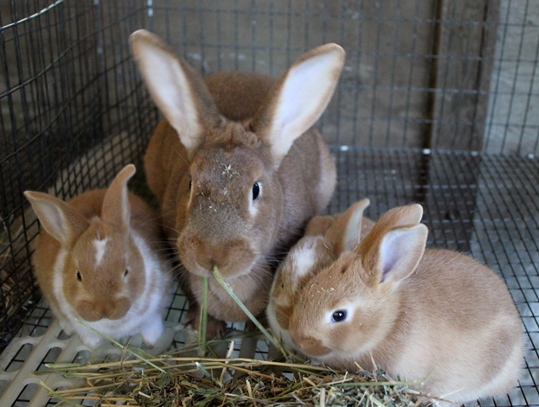
Am in delta state. How do I get a colony to buy
Am at Ogun state How do I get a colony to buy? And i want to know also if you are organizing something like traing /workshop to educate people more on this grasscutter farming ,i will like to attend because am afried .I don’t want to make mistake
WhatsApp 07015974403
I like to have more ideas on training,as I am in ondo state Nigeria, where is the nearby center to buy ?
you are too good God bless you . your contribution make sense thank you.
Thank you Sola
Can you link me up to where I can get grasscutter to start my farm in Ekiti State?
Thanks so much, your information has helped increase my knowledge about grasscutters habitation.
You’re welcome Peter. Thanks for reading.
Please can i rare grasscutters caught from the bush?
Yes, you can!
Thanks for the information. I want to get started, where do I get a colony to buy.
You’re welcome. I can help you to get a good, productive grasscutter colony from a reliable source. Drop me a message here via this link http://www.livestocking.net/contact
I sincerely appreciate the good job you have done in educating us about cane rat farming. Pls, how much can it cost for a tarter? Thank you.
You can get started with just #150,000
symptoms of pregnant grasscutters
Loss of appetite and bulging of the stomach.
symptoms of grasscutters about to give birth and name all the kind of food grasscutter eat and please send me a picture of all the compulsory grasscutter cages
symptoms of pregnant grasscutters
this is an eye-opener in agro-business. this information is very educative
Thanks
Thanks for d information, please how can i get d colony my contact 08064394598
You can reach me via this contact page
Good job Keep it up
How much does a colony cost?
Can you help to start the rearing – construction of the pen the colony and other facilities for successful farming?
What will be the cost?
Thanks
A colony of grasscutters cost between 55,000-65,000 Naira
Hello,
It’s a pleasure knowing about this rear way to breeding of grass cutter.
How ever I would love to have you mentor me or assist me with your PDF free book on how to go in to commercial business on it.
I also love to know what the eat, how to treat them , while also how to have them in there cage or pens .
Please kindly avail me with your expertise.
Thank you
Dr Marshall .A.E. Odede
There is a link to a free grasscutter farming ebook at the end of the article.
I want to start grass-cutters farming in Edo state this year, how or where I get a reliable contact that will supply me with affordable price also training materials which will guide me more. You can reach me on [email protected]
I will like to start grass cutter farm and I will like to talk to you about the best way to start: right breed of colony, right modalities for the farm. I need to talk to you personally. 07086013104
Thanks a lot for this enlightenment….
you’re welcome
Location please I am interested , how will it get to me here Ebonyi state you can reach me on this number 08034218727
I will reach out to you
no reference to the beautiful writing, that would solidify your work the more. I appreciate this a lot, you did a great work